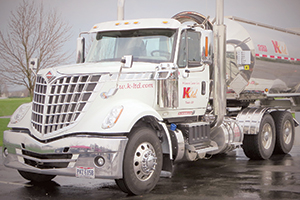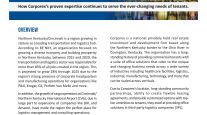Senior Reporter
Diesel Average Gains 1.7¢ to $2.502

The U.S. average retail price of diesel rose 1.7 cents a gallon to $2.502 last week, the first increase in three weeks, the Department of Energy reported.
Diesel is less expensive by $1.175 a gallon from a year ago, when the price was $3.677.
But experts said international trends will drive the price of oil to $60 a barrel or higher from the mid-$40 range now, raising fuel prices as a result.
Last week’s price climbed above the $2.50 mark for the first time since Oct. 12, when it was $2.556, DOE’s Energy Information Administration said after its Nov. 9 survey of fueling stations.
Prices rose in all regions except the Rocky Mountains, where diesel slipped 0.9 cent to $2.488, and California, which saw a 1.4-cent drop to $2.803.
The average regular gasoline price rose 1.1 cents to $2.235 a gallon. Gasoline is 70.6 cents cheaper than a year ago, when it cost $2.941.
It was the first increase in the price of gasoline after three consecutive weeks of declines.
Dennis Perna, chief financial officer at K-Limited Carrier, told Transport Topics the company’s fleet of 100 Class 8 tractors uses about 100,000 gallons of diesel a month.
The Toledo, Ohio-based bulk liquid hauler watches fuel prices daily, he said.
“We have established a relationship with Pilot Flying J, which has been very helpful,” he said. “We strongly believe in partnering with our vendors, and Pilot has been a very good match for us.”
He said drivers are encouraged to purchase their fuel there and do so unless it’s not possible, he said.
“We have found it necessary to maintain on-site diesel exhaust fluid in order to be most cost-effective in those purchases,” Perna added.
Last week, Pilot listed dozens of its locations where the cash price at the pump for a gallon of DEF was $2.799, which was consistently higher than diesel prices at the same location. But Pilot said retail prices can vary by a trucker’s manner of payment, including cash, credit, fuel card, direct or tax-exempt status.
On the New York Mercantile Exchange, crude oil futures contracts for West Texas Intermediate remained below $50 a barrel, closing at $43.87 on Nov. 9, down from $46.14 a week earlier.
However, hedge funds are betting on prices to rise, Bloomberg News reported.
Money managers’ net long position (signaling a belief prices would rise) in West Texas Intermediate crude rose 20% in the week ended Nov. 3, the most in seven months, according to data from the U.S. Commodity Futures Trading Commission. Bets on rising prices increased to the highest level since June, Bloomberg said.
Perna said he believes “Saudi Arabia and others will eventually push for an increase in oil pricing, however, [but] look to keep the pricing low enough to capture market share from weaker producers and those with higher costs. This should also keep the U.S. production from gaining market share. I believe we will see pricing in the $60 range near the end of next year,” he said.
The last time WTI closed at $60 was June 24, when it was $60.27. Diesel cost $2.859 on June 22.
Perna suggested the re-entry of Iranian oil onto the world market sometime next year will be a wild card as to its effect on oil prices.
Bloomberg said Iran’s crude output has been rising for two years and stands at about 2.9 million barrels a day, the highest level since 2012. Iran won’t be allowed to sell that extra crude until sometime next year, when the International Atomic Energy Agency verifies that Iran has complied with curbs on its nuclear program.
“Since Saudi Arabia has such large cash reserves, it appears it can last a couple years with current production at current pricing. Others really need pricing to increase in order to assist with budget issues,” Perna said.
Carl Larry, head of oil and gas for Frost & Sullivan, told Bloomberg, “The economy is on the rebound, China is coming out of a bear market, people are saying let’s get long oil. “We’re near the bottom at $40, and there’s a potential upside that’s much higher.”


